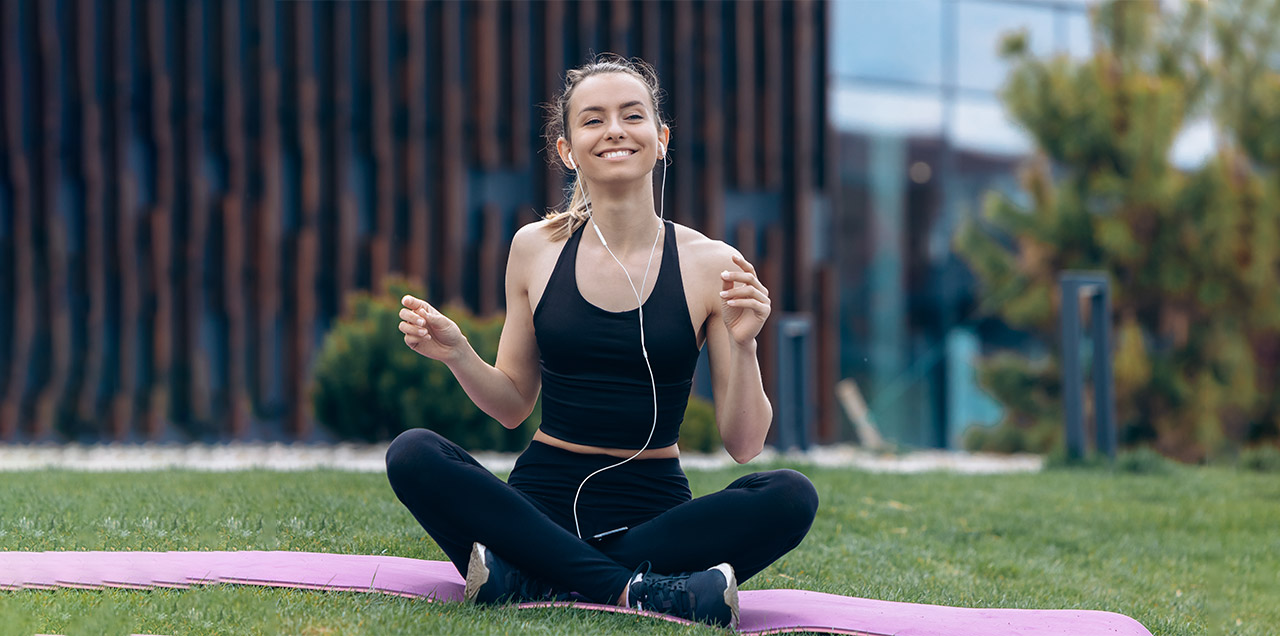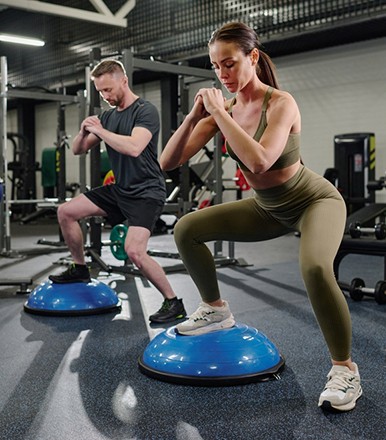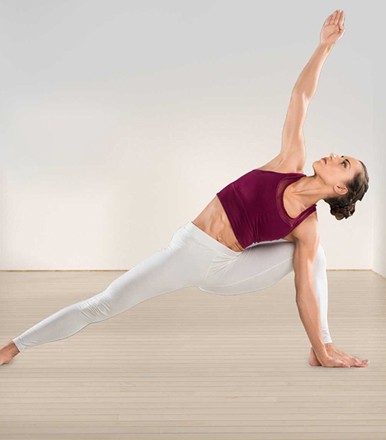In today's fast-paced world, finding moments of peace and presence can be challenging. However, by incorporating mindful movement into your workouts, you can cultivate a deeper connection between your mind and body, enhancing both physical and mental well-being.
Introduction to Mindful Movement
Mindful movement involves bringing your full attention to the present moment during physical activity. It's about being aware of your body's movements, sensations, and breath while engaging in exercise. This practice stems from mindfulness meditation, which emphasizes non-judgmental awareness of the present moment.
Benefits of Mindful Movement
- Physical Benefits: Mindful movement can improve flexibility, balance, and coordination. By focusing on proper alignment and technique, you reduce the risk of injury and promote overall physical health.
- Mental Benefits: Engaging in mindful movement can help alleviate stress, anxiety, and depression. It allows you to let go of worries about the past or future and simply be present in the here and now.
- Emotional Benefits: By connecting with your body and breathing, mindful movement can enhance self-awareness and emotional regulation. It can help you better understand and manage your emotions, leading to greater emotional resilience.
How to Incorporate Awareness into Your Workouts
- Breathing Techniques: Start by paying attention to your breath during exercise. Practice deep, diaphragmatic breathing to calm the nervous system and stay grounded in the present moment.
- Body Awareness: Focus on the sensations in your body as you move. Notice the feeling of your muscles contracting and releasing, the rhythm of your heartbeat, and the flow of energy throughout your body.
- Focus on Sensations: Instead of letting your mind wander, bring your attention back to the physical sensations of movement. Notice the feeling of your feet hitting the ground, the wind against your skin, and the rhythm of your breath.
Setting Intentions
- Goal Setting: Before each workout, set an intention for what you hope to achieve. Whether it's improving strength, increasing flexibility, or simply finding peace of mind, having a clear intention can help focus your efforts.
- Visualization Techniques: Visualize yourself accomplishing your goals as you move through your workout. Imagine yourself performing each exercise with perfect form and ease, reinforcing a positive mindset.
- Affirmations: Use affirmations to cultivate a sense of confidence and empowerment. Repeat positive statements to yourself, such as "I am strong," "I am capable," or "I am deserving of self-care."
Mindful Warm-Up
- Gentle Stretches: Begin your workout with gentle stretching to warm up your muscles and increase blood flow. Focus on each stretch, moving slowly and deliberately, and paying attention to any areas of tension or tightness.
- Joint Mobility Exercises: Incorporate joint mobility exercises to improve range of motion and lubricate the joints. Move each joint through its full range of motion, paying attention to any areas of stiffness or restriction.
- Mindful Breathing During Warm-Up: Use your warm-up as an opportunity to center yourself and prepare for your workout. Take slow, deep breaths as you move through each warm-up exercise, allowing your breath to guide your movements.
Mindful Cardio
- Choosing the Right Activity: Select a cardiovascular activity that allows you to stay present and engaged. Whether it's walking, running, cycling, or dancing, choose an activity that feels enjoyable and sustainable for you.
- Paying Attention to Rhythm and Pace: Focus on the rhythm of your movements and the pace of your breath. Find a cadence that feels comfortable and sustainable, allowing you to maintain a steady flow of energy throughout your workout.
- Listening to Your Body: Stay attuned to your body's signals as you engage in cardio exercise. If you feel fatigued or out of breath, honor your body's need to rest and recover. Push yourself when it feels appropriate, but always prioritize safety and self-care.
Mindful Strength Training
- Form and Technique: Focus on proper form and technique during strength training exercises. Pay attention to alignment, stability, and muscle engagement, ensuring that each movement is performed with intention and precision.
- Slow and Controlled Movements: Emphasize slow, controlled movements to maximize muscle activation and minimize the risk of injury. Avoid rushing through exercises, and instead, focus on the quality of each repetition.
- Connecting with Muscle Groups: As you perform strength training exercises, focus on the specific muscle groups being targeted. Visualize the muscles contracting and releasing with each movement, enhancing your mind-muscle connection.
Mindful Cool Down
- Stretching with Intention: Conclude your workout with mindful stretching to release tension and promote relaxation. Focus on each stretch, breathing deeply into areas of tightness, and allowing your muscles to lengthen and relax.
- Progressive Relaxation: Practice progressive relaxation techniques to release tension from head to toe. Start at the top of your head and work your way down, consciously relaxing each part of your body as you go.
- Gratitude Practice: Take a moment to express gratitude for your body and the opportunity to move and exercise. Reflect on the sensations and emotions that arose during your workout, acknowledging the benefits of mindful movement.
Incorporating Mindfulness Beyond Workouts
- Daily Mindfulness Practices: Incorporate mindfulness into your daily life by engaging in activities such as meditation, journaling, or mindful eating. Find moments throughout the day to pause, breathe, and connect with the present moment.
- Mindful Eating: Practice mindful eating by savoring each bite, chewing slowly, and paying attention to the flavors and textures of your food. Notice how different foods make you feel physically, mentally, and emotionally.
- Mindful Living: Extend mindfulness beyond formal practices by bringing awareness to everyday activities such as walking, driving, or interacting with others. Approach each moment with curiosity, openness, and presence.
Overcoming Challenges
- Dealing with Distractions: Acknowledge and accept the presence of distractions during your workouts, but gently guide your focus back to the present moment. Use breath awareness and grounding techniques to stay centered amidst distractions.
- Patience and Persistence: Recognize that mindfulness is a skill that develops over time with practice. Be patient with yourself as you navigate the ups and downs of your journey, and trust in your ability to grow and evolve.
- Adapting to Setbacks: View setbacks as opportunities for learning and growth rather than failures. Embrace challenges as integral parts of the process, and approach them with resilience, flexibility, and self-compassion.
Mindful Movement for Mental Health
- Stress Reduction: Mindful movement can help reduce stress by promoting relaxation, releasing tension, and calming the nervous system. It provides a healthy outlet for processing emotions and managing stressors.
- Anxiety Management: Engaging in mindful movement can alleviate symptoms of anxiety by grounding you in the present moment and interrupting anxious thought patterns. It fosters a sense of stability, security, and inner peace.
- Boosting Mood: Physical activity releases endorphins, neurotransmitters that promote feelings of happiness and well-being. By combining exercise with mindfulness, you amplify the mood-boosting effects, fostering a positive outlook on life.
Finding Balance
- Listening to Your Body's Signals: Pay attention to your body's signals and adjust your workouts accordingly. Rest when you're tired, eat when you're hungry, and prioritize self-care to maintain balance and vitality.
- Avoiding Overexertion: While it's important to challenge yourself, avoid pushing your body beyond its limits. Honor your body's need for rest and recovery, and recognize the difference between discomfort and pain.
- Rest and Recovery: Integrate rest and recovery into your fitness routine to prevent burnout and injury. Allow your body time to recover between workouts, and prioritize sleep, nutrition, and relaxation to support overall well-being.
Mindful Movement and Connection
- Group Classes and Community: Participating in group fitness classes can foster a sense of connection and belonging. Surround yourself with like-minded individuals who share your commitment to health and wellness, and draw inspiration from their energy and enthusiasm.
- Partner Workouts: Engage in partner workouts to deepen your connection with others while enhancing your physical fitness. Share the experience of mindful movement with a friend or loved one, and support each other's goals and aspirations.
- Sharing Experiences: Reflect on your experiences with mindful movement and share them with others. Whether through social media, online forums, or face-to-face conversations, inspire and empower others to embrace the practice of mindfulness in their own lives.
Tips for Beginners
- Start Small: Begin with simple mindfulness techniques and gradually incorporate them into your workouts. Focus on one aspect at a time, such as breath awareness or body scanning, and gradually expand your practice as you feel comfortable.
- Gradually Increase Intensity: Progressively challenge yourself by increasing the intensity and duration of your workouts over time. Listen to your body's cues and adjust your approach as needed, gradually building strength, endurance, and resilience.
- Be Patient with Yourself: Remember that mindfulness is a skill that takes time and practice to develop. Be patient with yourself as you navigate the learning process, and celebrate your progress and growth along the way.
Incorporating awareness and intention into your workouts can transform exercise from a mundane routine into a meaningful practice of self-discovery and empowerment. By embracing mindful movement, you cultivate a deeper connection with your body, mind, and spirit, enhancing both physical and mental well-being. So, take a moment to breathe, tune in, and move with purpose. Your body and mind will thank you for it.
Hello Fitness Magazine is your go-to source for the latest trends, tips, and insights on health and wellness. From nutrition advice to workout routines, we're dedicated to helping you live your best life. Ready to embark on your journey to better health and well-being? Visit Hello Fitness Magazine today for expert advice, inspirational stories, and actionable tips to help you reach your goals. Whether you're looking to improve your diet, ramp up your fitness routine, or prioritize self-care, we've got you covered. Get started now and say hello to a happier, healthier you!














